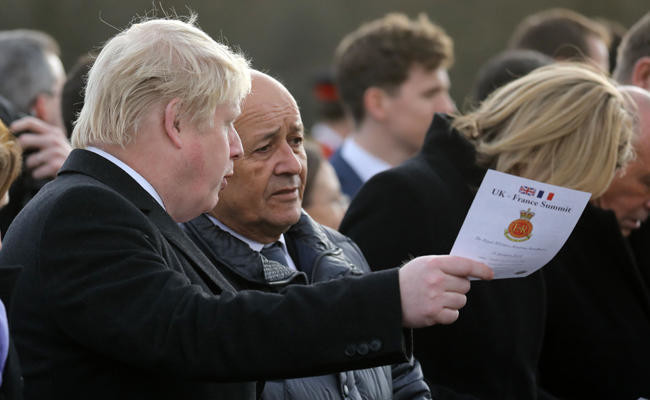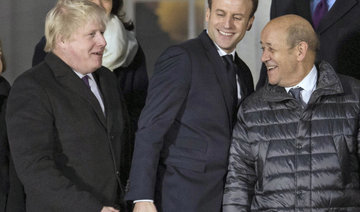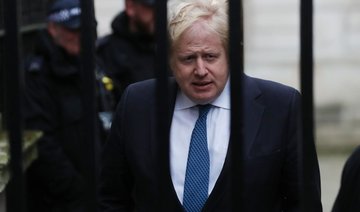LONDON: If Boris Johnson’s suggestion to build a bridge between the UK and France is his PR stunt for the week then it’s a job well done.
The UK foreign minister flexed his design ambitions by raising the idea with French president Emmanuel Macron at a UK-France summit on Thursday.
Johnson said it was “ridiculous” that the two countries are linked by a single railway and floated the idea of a 22-mile Channel Bridge to maintain “good connections” in the future, according to the Daily Telegraph newspaper.
If, as some commentators have suggested, it’s the germ of his latest grand design on London’s transport landscape, then the project could be doomed from the start.
Johnson’s track record in infrastructure of this scale is “abysmal,” said Dave Parker, technical editor of New Civil Engineer magazine.
“He’s almost the kiss of death really for any major project.”
Not that the idea is untenable. “A bridge across the channel has been seriously considered before and is entirely feasible,” Ian Firth, Past President of The Institution of Structural Engineers said.
However, with the UK’s impending departure from the EU, the impact of such a project would now be highly dependent on the outcome of Brexit negotiations surrounding trade and freedom of movement between the UK and Europe.
“You really need to have a structure that you can drive on at one end and drive off at the other without changing gear, then it makes sense,” Parker said.
“To be able to drive from London to the north of Norway or the south of Italy without going under water or going through a customs barrier would be fantastic.”
If it did go ahead, it would be a “very expensive job,” he added.
However soaring costs haven’t always succeeded in hindering Johnson’s ambitions.
His list of infrastructure vanity projects, both complete and canned, is lengthy, from the controversial £175 million Garden Bridge project to the abandoned idea of building “Boris’ island” at a cost of £5 million to accommodate a new airport in the Thames estuary.
Others, like the Thames cable car and the Routemaster bus secured the necessary millions needed to see them through, but failed to impress Londoners, who tend to ignore the first and bemoan the latter.
Speaking to his aides yesterday, Johnson said that a bridge across the Channel between England and France would be achievable, pointing to larger structures in Japan and elsewhere, the Telegraph reported.
He followed up with a tweet to say: “Our economic success depends on good infrastructure and good connections. Should the Channel Tunnel be just a first step?”
A joint statement from the summit described the “long history of collaboration in delivering cutting-edge technologies” between England and France.
"Whether pioneering supersonic travel or better connecting our countries through the Channel Tunnel, co-operation between our nations has produced radical innovation.”
The prime minister’s spokesman said he’d not seen any plans for a Channel Bridge. “What was agreed yesterday, and I think that’s what the foreign secretary tweeted about as well, is a panel of experts who will look at major projects together including infrastructure.”
A Channel bridge would certainly fall into this category.
Describing it as a “good PR exercise” but a “non-starter,” Construction News infrastructure reporter Jack Simpson said: “Before you get to questions over whether it can be built, there are issues over shipping lanes, who will pay for it, and whether there is any use for it.
“While experts say building the bridge is doable, they also say it would cost in the region of £120 billion. At a time when the UK is struggling to find funds for projects like Crossrail 2 and HS3, why would we need to build a bridge for that price, when we have tunnels and ships that can do the same job."
Firth said significant challenges would arise over the risk of collision in one of the world’s busiest shipping lanes but added that advances in modern technology make this easier to prevent.
With the likelihood of robot ships steered by artificial intelligence evermore imminent, the chances of ships colliding with the bridge in the fog would indeed be significantly reduced.
Whether the British public has the stomach for a Boris bridge is another matter.




















